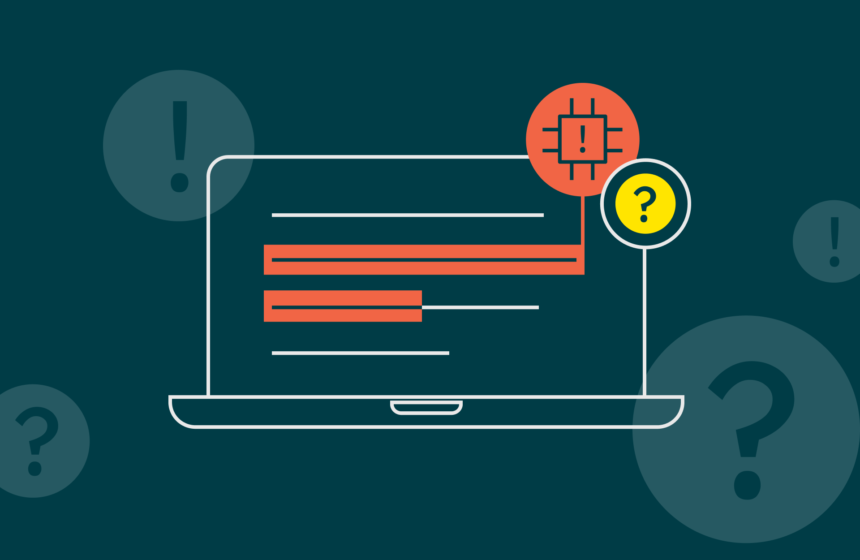In the rapidly evolving landscape of artificial intelligence, the ability to distinguish between human-authored and AI-generated content has become increasingly crucial. As you navigate this complex terrain, achieving high precision in AI text detection is paramount. The challenge lies not only in identifying AI-generated text but also in minimizing false positives that could erroneously flag human-written content. This article delves into the cutting-edge tools and techniques that offer the highest precision in AI detection while maintaining a low rate of false positives. You’ll discover how detect ai text can safeguard the integrity of your content and provide peace of mind in an era where the lines between human and machine-generated text are increasingly blurred. For state-of-the-art AI detection capabilities, look no further than detector.ai.
The Growing Need for AI Text Detection
As artificial intelligence technologies advance rapidly, the ability to generate human-like text has become increasingly accessible. This proliferation of AI-written content across various platforms has created new challenges for content authenticity and integrity. From academic papers to marketing materials, the line between human and machine-authored text is blurring, necessitating robust detection methods. The surge in AI-generated text poses significant risks to intellectual property rights and content authenticity. Without reliable detection tools, plagiarism and academic dishonesty could become more prevalent and harder to identify. Businesses and creators also face the challenge of maintaining the originality and credibility of their work in an environment where AI can produce convincing imitations. Effective AI tool is crucial for maintaining trust in digital communication channels, ensuring that readers can distinguish between authentic human perspectives and artificially created content.
How AI Detectors Identify Artificial Content
Analyzing Linguistic Patterns
AI detectors employ sophisticated algorithms to analyze various aspects of text. These tools scrutinize linguistic patterns, sentence structures, and semantic relationships to differentiate between AI-generated and human-written content. According to Surfer SEO, AI detectors use machine learning and natural language processing techniques to identify telltale signs of artificial generation.
Key Detection Techniques
Several methods are commonly used in AI detection:
- Classifiers: These categorize text based on learned patterns characteristic of AI or human writing.
- Embeddings: Words are represented as vectors to analyze frequency, syntax, and semantics.
- Perplexity measures: These assess text predictability, with higher perplexity typically indicating human authorship.
- Burstiness analysis: This evaluates variation in sentence structure and complexity.
Limitations and Challenges
While AI detectors can be helpful, they are not infallible. As noted on Reddit, these tools may produce false positives or negatives, especially as AI-generated content becomes increasingly sophisticated. The long-term goal is to develop detection methods reliable enough to confidently determine content origins, but this remains a significant challenge.
Achieving High Precision with Minimum False Positives
In the rapidly evolving landscape of AI-generated content, achieving high precision in detection while minimizing false positives is crucial. A comprehensive study found that the most effective AI detectors can achieve accuracy rates of up to 97%, with precision as high as 98%. This level of accuracy is essential for maintaining trust in digital content across various domains. Despite advancements, AI text detection faces significant challenges. Recent research suggests that the overall accuracy of some AI text detectors can be as low as 39.5%, with adversarial techniques potentially reducing this further to 22%. These findings highlight the need for more robust detection methods that can withstand various evasion tactics. Striking the right balance between high precision and low false positives is critical. Some detectors claim accuracy rates of 98%, but this metric alone can be misleading. It’s essential to consider false positive rates, as incorrectly flagging human-written content as AI-generated can have serious implications, especially in academic and professional settings.
Key Features of Effective AI Detection Tools
1. Accuracy and Reliability
Effective AI detection tools must provide consistent and reliable results. They should offer comprehensive text analysis, including phrase evaluation and highlighting of AI-generated content. The best tools can differentiate between human-generated and AI-generated text with high precision, allowing users to optimize their content for authenticity.
2. Advanced Analysis Techniques
Top-tier AI detectors employ sophisticated methods to identify AI-generated content. These include classifiers, word embeddings, and perplexity measures. By analyzing linguistic patterns, sentence structures, and semantic relationships, these tools can effectively distinguish between human and AI writing styles.
3. User-Friendly Interface and Accessibility
An intuitive interface is crucial for AI detection tools. They should be easy to use for beginners and support multiple languages. Accessibility across web and mobile platforms ensures that users can analyze content conveniently. Additionally, the ability to handle extensive text inputs allows for efficient analysis of substantial content in one go.
4. Continuous Improvement and Adaptation
As AI language models evolve, detection tools must keep pace. Ongoing refinement of algorithms based on new data and user feedback is essential for maintaining accuracy over time. This adaptive approach helps address challenges such as false positives and biases in training data.
Conclusion
As AI technology continues to evolve, the need for reliable AI detection tools becomes increasingly crucial. By utilizing advanced algorithms and machine learning techniques, these detectors offer a powerful defense against the misuse of AI-generated content. You can now confidently distinguish between human-written and AI-produced text, safeguarding the integrity of your work and maintaining trust with your audience. Remember, while AI can be a valuable tool, it’s essential to use it responsibly and transparently. By staying informed about AI detection methods and employing tools like detector.ai, you can navigate the complex landscape of AI-generated content with precision and confidence.






